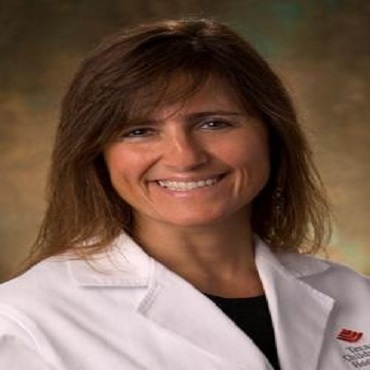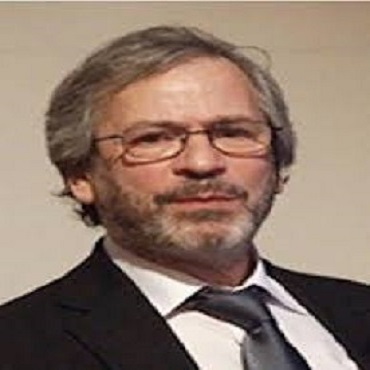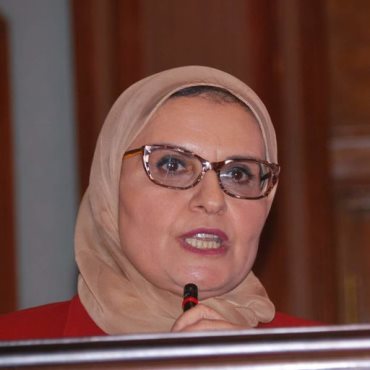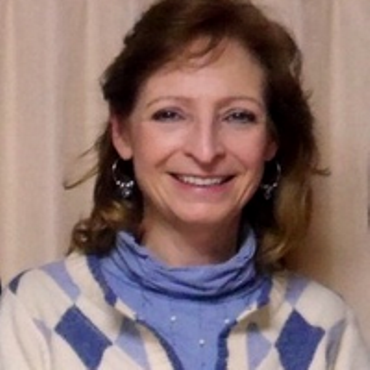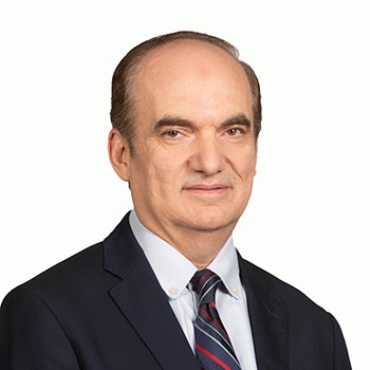
Cardiology 2018
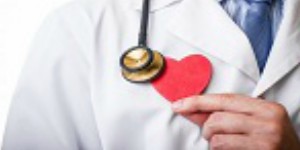
Theme: New challenges and Innovations in Cardiological Research
2nd International Conference On Cardiology & Cardiac Nursing is scheduled during October 24-25, 2018 at Paris, France, with a theme of New challenges and Innovations in Cardiological Research. Cardiology 2018 will affect an alluring minute to meet individuals in the exploration field and along these lines it takes a get a kick out of opening a door to meet the capacity in the field, youthful analysts and potential speakers. The gathering likewise incorporates fundamental themes on Pediatric Cardiology, Cardiovascular pharmacology, Cardiac nursing, Clinical Cardiology, Cardio-Oncology, Cardiovascular Surgeries, Case Reports on Cardiology, Interventional cardiology, Nuclear Cardiology, Obesity & Diabetes, Vascular heart disease, Cardiomyopathy & Heart Failure, Cardiovascular Diseases during Pregnancy, Cardiac Diagnostic Test, Cardiovascular Radiology and Intervention, Heart Stroke and Advanced Nursing Practice.
Paris, capital of France known throughout the world as the “City of Light”, Paris is celebrated for its beautiful city plan, its architecture, Louvre museum, the most visited in the world, Musee d’Orsay is noted for its collection of French Impressionist art, bridges, cathedrals, parks, shopping, flea markets, sidewalk cafés, wide and luxurious boulevards, elegant cuisine, and numerous monuments.
The Cardiology Meeting 2018 Highlights are listed below:
- Pediatric Cardiology
- Cardiac Nursing
- Clinical Cardiology
- Cardio-Oncology
- Cardiovascular Surgeries
- Case Reports on Cardiology
- Interventional Cardiology
- Nuclear Cardiology
- Cardiomyopathy & Heart Failure
- Cardiac Diagnostic Test
- Cardiovascular Radiology and Intervention
- Heart Stroke
Session 1: Pediatric Cardiology:
Pediatric cardiology is responsible for the diagnosis of congenital heart defects, performing diagnostic procedures such as echocardiograms, cardiac catheterization and electrophysiological studies. The increasing number of neonates with congenital heart defects referred to the neonatal intensive care unit reflects the increasing awareness that the defects may be present. Chest radiography and ECG rarely assist in the neonatal diagnosis. Congestive heart failure in the fetus, or hydrops, can be detected by performing fetal echocardiography. Many of the pediatric heart defects such as patent ductus arteriosus interruption, vascular ring division, pericardial window, diaphragm placation, thoracic duct ligation, ligation of collateral vessels have been repaired using pediatric interventional cardiology. Apart from these techniques nursing and care for pediatric cardiac patients also plays an important role for the cure of pediatric cardiac patients.
Related Conferences & Societies: Annual Symposium on Vascular and Endovascular Issues, Nov 13 2018, USA; Diagnostic and Interventional Cardiology, Jan 22 2018, Mexico; International Conference on Cardiology and Cardiovascular Diseases, USA; Bulgarian Society of Cardiology, Bulgaria; Albanian Society of Cardiology, Albania; Italian Federation of Cardiology, Italy; Latvian Society of Cardiology, Latvia; Netherlands Society of Cardiology, Netherlands; Swedish Society of Cardiology, Sweden; Tunisian Society of Cardiology and Cardiovascular Surgery, Tunisia; Swiss Society of Cardiology, Switzerland.
Session 2: Cardiac Nursing:
Cardiac nursing is a special nursing field which works with patients who suffer from different conditions of the cardiovascular system. Cardiac nurses help treat and care conditions such as unstable angina, cardiomyopathy, coronary artery disease, congestive heart failure, infarction of myocardium and cardiac arrhythmia under the direction of a cardiologist. The cardiac nurses perform post-operative treatment on a surgical unit, stress test assessments, cardiac monitoring, vascular monitoring and health assessments. Cardiac nurses work in various kinds of environments, involving coronary care units (CCU), catheterization of heart, intensive care units (ICU), operating theatres, cardiac rehabilitation centers, clinical research, wards for cardiac surgery, cardiovascular intensive care units (CVICU), and cardiac medical wards.
Related Conferences & Societies: Annual Symposium on Vascular and Endovascular Issues, Nov 13 2018, USA; Mexico; International Conference on Cardiology and Cardiovascular Diseases, ; Bulgarian Society of Cardiology, Bulgaria; Albanian Society of Cardiology, Albania; Italian Federation of Cardiology, Italy; Latvian Society of Cardiology, Latvia; Netherlands Society of Cardiology, Netherlands; Swedish Society of Cardiology, Sweden; Tunisian Society of Cardiology and Cardiovascular Surgery, Tunisia; Swiss Society of Cardiology, Switzerland.
Session 3: Clinical Cardiology:
Cardiology concerns with diseases and disorders of the heart, such as coronary artery disease and congestive heart failure. The field includes medical diagnosis and treatment of congenital heart defects, coronary artery disease, heart failure, valvular heart disease and electrophysiology. Although the heart and circulatory system make up your cardiovascular system. Heart works as a pump that pushes blood to the organs, tissues, and cells of your body. Blood delivers oxygen and nutrients to every cell and removes the carbon dioxide and waste products made by those cells.
Related Conferences & Societies: Annual Symposium on Vascular and Endovascular Issues, Nov 13 2018, USA; Mexico; International Conference on Cardiology and Cardiovascular Diseases, ; Bulgarian Society of Cardiology, Bulgaria; Albanian Society of Cardiology, Albania; Italian Federation of Cardiology, Italy; Latvian Society of Cardiology, Latvia; Netherlands Society of Cardiology, Netherlands; Swedish Society of Cardiology, Sweden; Tunisian Society of Cardiology and Cardiovascular Surgery, Tunisia; Swiss Society of Cardiology, Switzerland.
Session 4: Cardio-Oncology:
Cardio-oncology is the heart condition in patients who have been treated for cancer. Cardiologists estimate patients for potential risk of developing heart conditions if patients take certain types of cancer drugs or other radiation treatment to the chest conditions. Cardiologists also help oncologists in patients during treatment by closely watching the heart conditions and recognizing heart trouble early in treatment.
Related Conferences & Societies: Annual Symposium on Vascular and Endovascular Issues, Nov 13 2018, USA; Mexico; International Conference on Cardiology and Cardiovascular Diseases, ; Bulgarian Society of Cardiology, Bulgaria; Albanian Society of Cardiology, Albania; Italian Federation of Cardiology, Italy; Latvian Society of Cardiology, Latvia; Netherlands Society of Cardiology, Netherlands; Swedish Society of Cardiology, Sweden; Tunisian Society of Cardiology and Cardiovascular Surgery, Tunisia; Swiss Society of Cardiology, Switzerland.
Session 5: Cardiovascular Surgeries:
The improvement of heart surgery and cardiopulmonary sidestep procedures has lessened the death rates of these surgeries to generally low positions. For example, repairs of inborn heart deformities are at present assessed to have 4–6% death rates. A noteworthy worry with cardiovascular surgery is the frequency of neurological harm. A more inconspicuous complexity of neurocognitive shortages credited to cardiopulmonary sidestep is known as post perfusion disorder, now and then called "pump head". The indications of postperfusion disorder were at first felt to be permanent, but were appeared to be transient with no lasting neurological hindrance.
Related Conferences & Societies: Annual Symposium on Vascular and Endovascular Issues, Nov 13 2018, USA; Mexico; International Conference on Cardiology and Cardiovascular Diseases, ; Bulgarian Society of Cardiology, Bulgaria; Albanian Society of Cardiology, Albania; Italian Federation of Cardiology, Italy; Latvian Society of Cardiology, Latvia; Netherlands Society of Cardiology, Netherlands; Swedish Society of Cardiology, Sweden; Tunisian Society of Cardiology and Cardiovascular Surgery, Tunisia; Swiss Society of Cardiology, Switzerland.
Session 6: Case Reports on Cardiology:
Cardiology is a branch of medicine dealing with disorders of the heart. Heart is an important muscular organ in humans and other animals, pumps blood through the blood vessels of the circulatory system. The drugs that are used to treat other disorders in body, show a great impact on heart causing various side effects. Hence case reports on cardiac disorders and diseases have a great value and help in advancing and development of treatment strategies. Cardiology conferences, cardiologist meetings and cardiology events are very important for the common people to be aware of the most important part of human body.
Related Conferences & Societies: Annual Symposium on Vascular and Endovascular Issues, Nov 13 2018, USA; Mexico; International Conference on Cardiology and Cardiovascular Diseases, ; Bulgarian Society of Cardiology, Bulgaria; Albanian Society of Cardiology, Albania; Italian Federation of Cardiology, Italy; Latvian Society of Cardiology, Latvia; Netherlands Society of Cardiology, Netherlands; Swedish Society of Cardiology, Sweden; Tunisian Society of Cardiology and Cardiovascular Surgery, Tunisia; Swiss Society of Cardiology, Switzerland.
Session 7: Interventional Cardiology:
The Interventional Cardiology is one of the main branches of cardiology. It refers to the specific Cather based techniques to various structural heart diseases, non-surgical procedures for treating cardiovascular disease. The experts in this arena are called Interventional cardiologists. They handle catheters; it is thin, flexible tube to repair damaged vessels or other heart structures, often avoiding the need for surgery. The insertion of a sheath into the femoral artery and cannulating the heart under X-ray visualization is one of the heart catheterization techniques. Cardiac catheterization is a test which used to evaluate the coronary arteries and heart valve function.
Related Conferences & Societies: Annual Symposium on Vascular and Endovascular Issues, Nov 13 2018, USA; Mexico; International Conference on Cardiology and Cardiovascular Diseases, ; Bulgarian Society of Cardiology, Bulgaria; Albanian Society of Cardiology, Albania; Italian Federation of Cardiology, Italy; Latvian Society of Cardiology, Latvia; Netherlands Society of Cardiology, Netherlands; Swedish Society of Cardiology, Sweden; Tunisian Society of Cardiology and Cardiovascular Surgery, Tunisia; Swiss Society of Cardiology, Switzerland.
Session 8: Nuclear Cardiology:
Heart disease is the dominant reason of death in the western world. Each year in the U.S.A, above 500,000 men and women die due to coronary artery disease. During the last two decades, major strides have been done in the analysis and treatment of heart disease. Nuclear Cardiology is the main reason for beginning of the diagnosis of heart disease and the assessment of disease extent and the detection of outcomes in the setting of coronary artery disease. Nuclear cardiology studies use non-invasive methods to analyse myocardial blood flow, determine the pumping function of the heart as well as visualize the size and placing of a heart attack. Among the techniques of nuclear cardiology, myocardial perfusion imaging is the most commonly used.
Related Conferences & Societies: Annual Symposium on Vascular and Endovascular Issues, Nov 13 2018, USA; Mexico; International Conference on Cardiology and Cardiovascular Diseases, ; Bulgarian Society of Cardiology, Bulgaria; Albanian Society of Cardiology, Albania; Italian Federation of Cardiology, Italy; Latvian Society of Cardiology, Latvia; Netherlands Society of Cardiology, Netherlands; Swedish Society of Cardiology, Sweden; Tunisian Society of Cardiology and Cardiovascular Surgery, Tunisia; Swiss Society of Cardiology, Switzerland.
Session 9: Cardiomyopathy & Heart Failure:
Heart failure (HF), often referred to as chronic heart failure (CHF), occurs when the heart is unable to pump sufficiently to maintain blood flow to meet the body's needs. These cause heart failure by changing either the structure or the functioning of the heart. There are two main types of heart failure: heart failure due to left ventricular dysfunction and heart failure with normal ejection fraction depending on if the ability of the left ventricle to contract is affected, or the heart's ability to relax. Common causes of heart failure include coronary artery disease including a previous myocardial infarction (heart attack), high blood pressure, atrial fibrillation, vascular heart disease, excess alcohol use, infection, and cardiomyopathy of an unknown cause. The severity of disease is usually graded by the degree of problems with exercise.
Related Conferences & Societies: Annual Symposium on Vascular and Endovascular Issues, Nov 13 2018, USA; Mexico; International Conference on Cardiology and Cardiovascular Diseases, ; Bulgarian Society of Cardiology, Bulgaria; Albanian Society of Cardiology, Albania; Italian Federation of Cardiology, Italy; Latvian Society of Cardiology, Latvia; Netherlands Society of Cardiology, Netherlands; Swedish Society of Cardiology, Sweden; Tunisian Society of Cardiology and Cardiovascular Surgery, Tunisia; Swiss Society of Cardiology, Switzerland.
Session 10: Cardiac Diagnostic Test:
Diagnostic tests on heart disease are methods of identifying cardiac conditions associated with unhealthy, unhealthy, morbid cardiac function. The common non-invasive cardiac diagnostic testing procedures used to diagnose coronary heart disease are transthoracic echocardiography, stress testing (exercise, pharmacological, and nuclear), multidetector computed tomography, coronary artery calcium scoring (with electron beam computed tomography or computed tomographic angiography), and cardiac magnetic resonance imaging. The objective is to describe available methods for non-invasive assessment of coronary artery disease, to identify the most appropriate population for each trial, to review the advantages and limitations of each test method, to patients undergoing various test methods Identification of considerations at nursing care, discovery of various ways.
Related Conferences & Societies: Annual Symposium on Vascular and Endovascular Issues, Nov 13 2018, USA; Mexico; International Conference on Cardiology and Cardiovascular Diseases, ; Bulgarian Society of Cardiology, Bulgaria; Albanian Society of Cardiology, Albania; Italian Federation of Cardiology, Italy; Latvian Society of Cardiology, Latvia; Netherlands Society of Cardiology, Netherlands; Swedish Society of Cardiology, Sweden; Tunisian Society of Cardiology and Cardiovascular Surgery, Tunisia; Swiss Society of Cardiology, Switzerland.
Session 11: Cardiovascular Radiology and Intervention:
Radiology department is specialized in medicine, using imaging technology to diagnose illness. In cardiovascular radiology, imaging techniques are used to diagnose cardiac and vascular disease. Cardiovascular surgeon (also called radiologist in vascular internal medicine) uses imaging tools such as X-ray, MRI, CT scan, etc. to diagnose and treat diseases. They also use detailed imaging equipment to guide medical instruments through minute entryways into the body during intricate medical procedures. Interventional radiology is a subspecialty of radiology. Interventional radiology uses imaging to help guide doctors when they are inserting catheters, wires, and other small instruments into your body. Doctors can use this technology to diagnose (a procedure called angiography) or to treat (a procedure called angioplasty) heart and blood vessel blockages, without actually having to perform surgery. Some other examples of interventional radiology procedures include stent placement, needle biopsies, and radiofrequency ablation (a treatment method for arrhythmia).
Related Conferences & Societies: Annual Symposium on Vascular and Endovascular Issues, Nov 13 2018, USA; Mexico; International Conference on Cardiology and Cardiovascular Diseases, ; Bulgarian Society of Cardiology, Bulgaria; Albanian Society of Cardiology, Albania; Italian Federation of Cardiology, Italy; Latvian Society of Cardiology, Latvia; Netherlands Society of Cardiology, Netherlands; Swedish Society of Cardiology, Sweden; Tunisian Society of Cardiology and Cardiovascular Surgery, Tunisia; Swiss Society of Cardiology, Switzerland.
Session 12: Heart Stroke:
A stroke occurs when blood does not flow through any part of the brain and damages brain cells. The effect of a stroke depends on the part of the damaged brain and the amount of injury. By knowing the function of the brain, it helps to understand stroke. The arterial thrombus in the brain can block the circulation to the brain. This can cause strokes. The carotid artery carries blood to the brain. Plaque formation on the carotid artery may have the same result. These scenarios cause so-called ischemic stroke. Another major type of stroke is hemorrhagic stroke. This happens when blood vessels in the brain rupture and blood leaks into surrounding tissues. High blood pressure that places a burden on the walls of your arteries can cause hemorrhagic stroke.
Related Conferences & Societies: Annual Symposium on Vascular and Endovascular Issues, Nov 13 2018, USA; Mexico; International Conference on Cardiology and Cardiovascular Diseases, ; Bulgarian Society of Cardiology, Bulgaria; Albanian Society of Cardiology, Albania; Italian Federation of Cardiology, Italy; Latvian Society of Cardiology, Latvia; Netherlands Society of Cardiology, Netherlands; Swedish Society of Cardiology, Sweden; Tunisian Society of Cardiology and Cardiovascular Surgery, Tunisia; Swiss Society of Cardiology, Switzerland.
Cardiology is a branch of drug managing issue of the heart be it human or creature. The field incorporates medicinal determination and treatment of intrinsic heart surrenders, coronary vein infection, heart disappointment, valvular coronary illness and electrophysiology. Doctors who have practical experience in this field of pharmaceutical are called cardiologists, a claim to fame of inward prescription.
Market Analysis Cardiac Devices:
The global market for cardiac medical devices was valued at nearly $49.4 billion in 2013 and $52 billion in 2014. This market is projected to reach nearly $67.5 billion by 2019, with a compound annual growth rate (CAGR) of 5.3% from 2014 to 2019
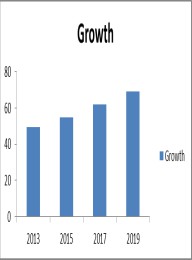
Cardiac monitoring and diagnostic market size in Asia in 2015 is 4.5$ bn, in 2017 it increases to 6$ bn with growth rate of 8%, and it will reach 12$ bn by 2023

Summary of Cardiology Conference:-
Cardiology (Devices and Technology) - Global Trends, Estimates and Forecasts, 2012-2018 statistical surveying report says worldwide interventional cardiology market is assessed to achieve US$22.2 billion by 2016. Cardiovascular industry development keeps on expanding with the nearness of numerous advances, for example, propelled material and programming which is highlighted in a large portion of the cardiology gadgets. So Cardiology meeting will be an awesome achievement now a days as the mindfulness for the treatment of cardiovascular infections is exceptionally vital among the general population and all will come to think about the
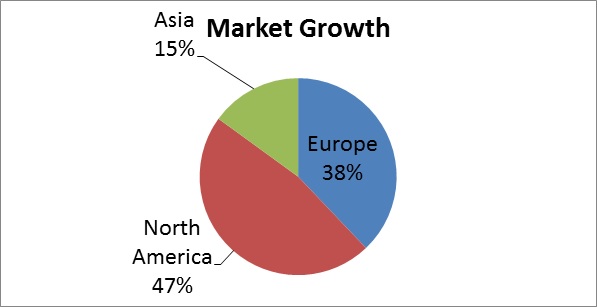
Scope and Importance:
A planned overview of patients with valvular coronary illness (VHD):
•Coronary angiography was utilized as a part of 85.2% of patients before mediation.
•The Euro Heart Survey (EHS) program has been started request to give quantitative data on cardiovascular sickness.
•To keep the occurrence of cardiovascular (CV) infection, by executing procedures to lessen the weight of CV hazard elements and frequency of CV illness, and create proper models for solid CV way of life.
Greatest Achievements in the Field of Cardiology:
- Electrocardiography
- Cardiac catheterization
- Coronary angiography
- Cardiovascular surgery
- Invasive cardiology
- The coronary care unit
- Cardiovascular drugs
- Preventive cardiology
- Echocardiography
- Pacemakers and internal defibrillators
Conference Highlights:-
- Heart Diseases
- Cardiologists
- Interventional Cardiology
- Inventions in the Field of Cardiology
- Heart and Blood Vessel Surgeries
- Electrocardiography
- Heart Failure
- Diabetes and the Heart
- Nuclear Cardiology
Why to attend???
With individuals from around the globe concentrated on finding out about Cardiology, this is your single best chance to achieve the biggest gathering of members from the clinics, Universities, people group, and so forth. This Annual Meeting will direct shows, convey data, meet with flow and potential specialists and get name acknowledgment. Widely acclaimed speakers, the latest methods, strategies, and the most up to date refreshes in Cardiology field are signs of this meeting.
Top-Ranked Hospitals for Cardiology & Heart Surgery: NewZealand
- Gilles Hospital & Clinics
- Boulcott Hospital
- Southern Cross Healthcare
- Auckland District Health Board
- St Marks Womens Health St Marks Breast Centre
Globally:
- Cleveland Clinic, Ohio
- Mayo Clinic, Rochester
- New York-Presbyterian University Hospital of Columbia and Cornell, New York
- Duke University Hospital, Durham
- Brigham and Women's Hospital, Boston
- Massachusetts General Hospital, Boston
- Hospitals of the University of Pennsylvania-Penn Presbyterian, Philadelphia
- Cedars-Sinai Medical Center, Los Angeles
- St Francis Hospital, Roslyn, New York
- Mount Sinai Hospital, New York
Worldwide:-
- The American Heart Association
- Heart Failure Society of America
- American Association of Heart Failure Nurses (AAHFN)
- Association for European Paediatric Cardiology
- European Society of Cardiology
- Heart Valve Society of America (HVSA)
- International Society for Heart Research (ISHR)
- Working Group for Cardiac Magnetic Resonance Spanish Society of Cardiology
- Society of Invasive Cardiovascular Professionals
Industries Globally for Cardiology Research:
- Sanofi
- AstraZeneca
- GlaxoSmithKline
- Care stream Health
- Intelomed
- Keystone Medical Technologies
List of Universities:-Newzland :
- University of Auckland
- University of Otago
- Auckland University of Technology
- Massey University
- Lincoln University
Worldwide:-
- University of Oxford
- Harvard University
- Stanford University
- Yale University
- Duke University
- Columbia University
- Imperial College London
- University of Sydney
- University of Basel
- New York University (NYU)
Market Value of Cardiology:-
The World Heart Federation (WHF) unites 200 members spanning 100 countries in the fight against cardiovascular disease Global Data research predicts the worldwide market for CMD devices will reach $1.2 billion by 2017. The global cardiovascular device industry is growing rapidly and is said that a growth of $15billion is made from 2010-2015 as per BCC research.Products included in this market are electrocardiograph monitoring equipment, which is set to see 4% growth by 2017 to be worth over $410 million
Market Growth of Cardiology Research in the last and upcoming years:
The global cardiovascular device industry is growing rapidly and exhibits signs that it will continue to evolve and expand to reach over $97 billion by 2017, up from nearly $85 billion in 2010 according to a study from BCC Research.
Products manufactured by the industry related to Cardiology research Globally:-
- Pacemakers
- Implantable defibrillators Stents
- Remote Patient Management.
- Vascular/Surgical Devices
- Small Molecules
- Heart valve corrective device
- Stents
- Specialized medicines;
- Medical Diagnostic Instruments
- Single-use cardiovascular medical devices
References:-
http://www.report.nih.gov/award/index.cfm
- Pediatric Cardiology
- Cardiac Nursing
- Clinical Cardiology
- Cardio-Oncology
- Cardiovascular Surgeries
- Case Reports on Cardiology
- Interventional Cardiology
- Nuclear Cardiology
- Cardiomyopathy & Heart Failure
- Cardiac Diagnostic Test
- Cardiovascular Radiology and Intervention
- Heart Stroke
- International Journal of Cardiovascular Research
- Journal of Surgery & Clinical Practice
- Journal of Nursing & Patient Care





